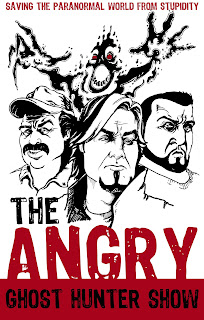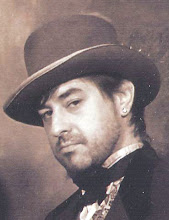Remember the days when toys were as simple as Lincoln logs,
little wooden pieces you could stack up to build little cabins with fences for
your matchbox cars. Or how about your basic LEGO blocks, made up of just
squares and rectangles, and let’s not forget the lighted box known as
Lite-Brite. With this fun item, you poked colored pegs into in order to create pixilated
glowing pictures of wonderment. How amazing those things were! These were some
of my basic toys growing up in the late 70’s, but the funny thing is, many of
you reading this probably didn’t even know what Lincoln Logs were. Back then, toys
were simple, basic and didn’t have a lot of moving parts. But they worked;
these toys got us through the day by using our imaginations with the fundamentals
of basic things.
Today, my toy box is a whole lot more complex, detailed and
even a great deal more expensive. With various EMF detectors, Ion counters, sonic
motion sensors and even thermo imaging, you can find yourself lost in the
confusion of fancy devices and compound readings. And with the constant growing
knowledge in the world of Science, technology continues to surpass last year’s
model, paving the road for the next generation of ghost hunters to a better
understanding of how our environment works. However, having the latest and greatest gadgets
doesn’t always give us a complete understanding of what’s happening in the
spirit world.
The simple tricks of the trade in recording ghostly voices
and producing their spooky likeness are really taken for granted with the works
of ghost hunting tools today. With digital technology, we can take thousands of
pictures and record hours upon hours of audio throughout the night. It’s so
easy. Hell - you don’t even need to be there when it’s all happening.
But, to better ourselves as ghost hunters, we need to be
aware of where of the history ghost hunting and its tools and techniques. How
was it we were first able to capture evidence of unseen forces lurking in the
dark? Do you know where EVP’s came from? Or even how we were able to seize the
idea of what ghosts really looked like, let alone prove it.
For years I have been working on reminding the paranormal
community that even though we are heading to a new world of technical science
in ghost hunting, we may be overlooking some of the older tools that worked for
us but sadly are becoming obsolete. I’m
talking about those tried and true cassette recorders and 35mm film cameras. (The
sounds of crickets fill the room)
COME ON! Think about it! These historic, dust-covered
devices have opened the doors to possible and questionable proof that the dead
are indeed out there trying to reach us. For decades, paranormal investigators
have depended on their basic tools to supports their findings in the not so
distant past.
#1 Digital vs. Film Photography: This has been an ongoing debate
in the paranormal field ever since digital cameras hit the market in the
1990’s. Starting at less than 1.0 mega pixels, digital photography could not
compare to what film could do. Nevertheless, through the years technology improved
digital cameras to the point that most professional photographers feel digital
cameras outshine 35mm film by reaching up to 200 mega pixels (that’s if you’re
looking to spend a major chunk of currency). Today, the
average digital camera will range between 10-16MP and if you talk to the
majority of ghost hunters out there, they will clearly point you in the
direction of digital over film, due to cost, plus quick and easy processing. Still,
there is a difference in what film can offer that digital cannot and will never
be able to. This is how it could affect us in the field of paranormal research.
Digital and Film are completely different media; their goal
is the same (capture subject) but how they achieve this is completely unrelated
to each other. Where film processing imitates a truer form to the human eye, basically,
what you see is what you get. The digital processing method is to recreate the image
in the best way it knows how. Also consider
this; film is a chemical process whereas digital is just that, digital.
In the early 1900’s, there was a phenomena called Psychography,
where psychics where known to produce images on unexposed film, without the use
of a camera. Now I’ve never seen this done myself (keeping an open mind here), but
could it be possible that spirit energy can manipulate film to produce the same
effect? Just something to think about.
Now in no way am I expecting you to run out and buy the top
of the line 35mm camera. Your digital camera is just fine doing the majority of
the work. However, pick up a disposable
film camera and keep it handy on your next investigation. Use it when there
seems to be increased activity in the air. You just might be surprised with the
results.
#2 Digital vs. Analog Recordings: the basic concept applies
here as well. These devices capture audio in a totally different way. Analog is the process of taking a sound and
translating it into electronic pulses. Digital on the other hand is breaking
the signal into a binary format where the audio is represented by a series of
"1"s and "0"s. Remember when digital recorders first came
out? The recordings and quality were so bad that you sounded mechanical yourself.
Again, through the years digital recordings have been improved and have
replaced our old ways of doing things. Nonetheless, analog which has been
around for centuries was clearly able to capture more of the natural
environment around us. So is it possible for these simpler gadgets of our past to
reach out and make contact with the spirit world? Can the ghosts we seek
manipulate these devices more often than the new toys coming out tomorrow?
Now there’s no question that digital media has been able to
apprehend ghostly encounters. All I’m saying is please consider the fact that
you may be limiting yourself from another way of collecting more odd pieces of
evidence if you so choose to focus on what tomorrow’s technology has to offer. Progress
isn’t always about moving forward, it’s also about remembering those Tried and
True ways of the past that are just as good as or possibly better than those
that the future may bring.


